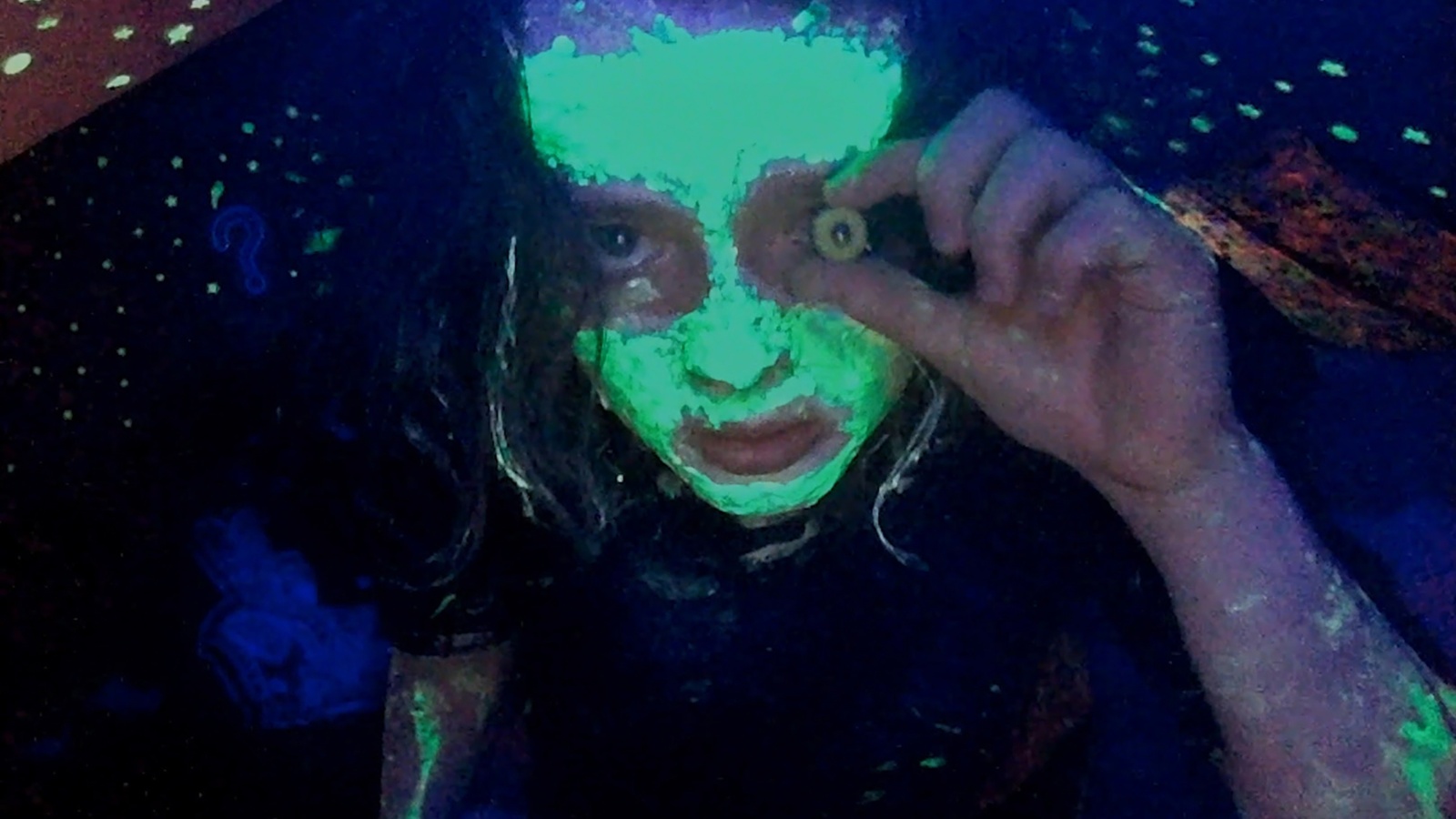For the year Sundance goes virtual, it’s inevitable that a few movies play differently than expected. It’s not the most ideal scenario for most projects. Then there’s something like We’re All Going to the World’s Fair that, with its virtual premiere, perhaps plays better than what Jane Schoenbrun could have gotten by showing it at the Ray or the Eccles. Watching it on a laptop just felt right. Watching it alone in the dark was even more appropriate. There’s a connection here. Like the one in the movie, it’s sincere, but it defies categorization.
At the center is Casey (Anna Cobb), a lonely teenage girl who’s found out about an online challenge. She starts recording herself on Photo Booth; cuts her finger; says, “I want to go to the world’s fair,” three times; and watches a video of strobe lights. Apparently, she’ll start to change in some way. Others on the internet claim they’re turning into plastic or can’t feel their body, and Casey’s okay with that. Whether something bizarre happens to her or she changes thanks to a placebo effect, she would, in her eyes, be exercising some sort of agency by bringing it on herself. At the bare minimum, she’d have something to focus on.
She tracks the progress to see if anything happens. She records herself sleeping, makes vlogs that no one watches, and puts them all online. Then a man only known as JLB (Michael J Rogers) comes across them and reaches out to her. He hides behind an icon and she shows her face while they Skype. It’s clearly uncomfortable at first, but it’s by the halfway point that We’re All Going to the World’s Fair becomes surprisingly tender. Here are two people bound by loneliness both similar to and different from each other. What makes it even more nebulous is knowing that elsewhere in the world, countless other people are doing this too. They might as well exist on another planet.
Schoenbrun, who also wrote and edited the film, lets us marinate in long takes and running playlists of internet videos. Long stretches occur where nothing really happens. Schoenbrun uses that time to compound the ennui instead, and it’s even more effective when it veers sharply between intimate and impersonal. At 86 minutes, almost half of it feels pointless without actually being so. This approach works more often than not.
It only clicks around the halfway point when the relationship between Casey and JLB starts to register. Their behavior, after all, is indicative of something much more universal than the Creepypasta stuff would lead one to believe. It’s telling that the first thing the movie shows Casey doing is harming herself, and it’s another thing for her to use something this opaque to justify it. This isn’t a portrait of someone having a mental breakdown. The focus isn’t on her decline or even the possibility of her starting to feel better. The space that encapsulates all of that is much more holistic than a clear-cut arc.
That said, credit has to go to Cobb for holding the movie together. She’s alone onscreen so much and not once does she interact with someone in person. Rogers, though, is the unexpected heart. His delivery is so soft, so unsure and insecure, that JLB becomes a person instead of a stranger. He cares about Casey. The circumstances in which he voices it are detached, but so is everything else. We’re All Going to the World’s Fair isn’t an exposé on internet culture or social media. Nothing about it is shocking, nor is it meant to be. That’s why it feels so real when it reaches its natural conclusion.
We’re All Going to the World’s Fair premiered at Sundance Film Festival.

